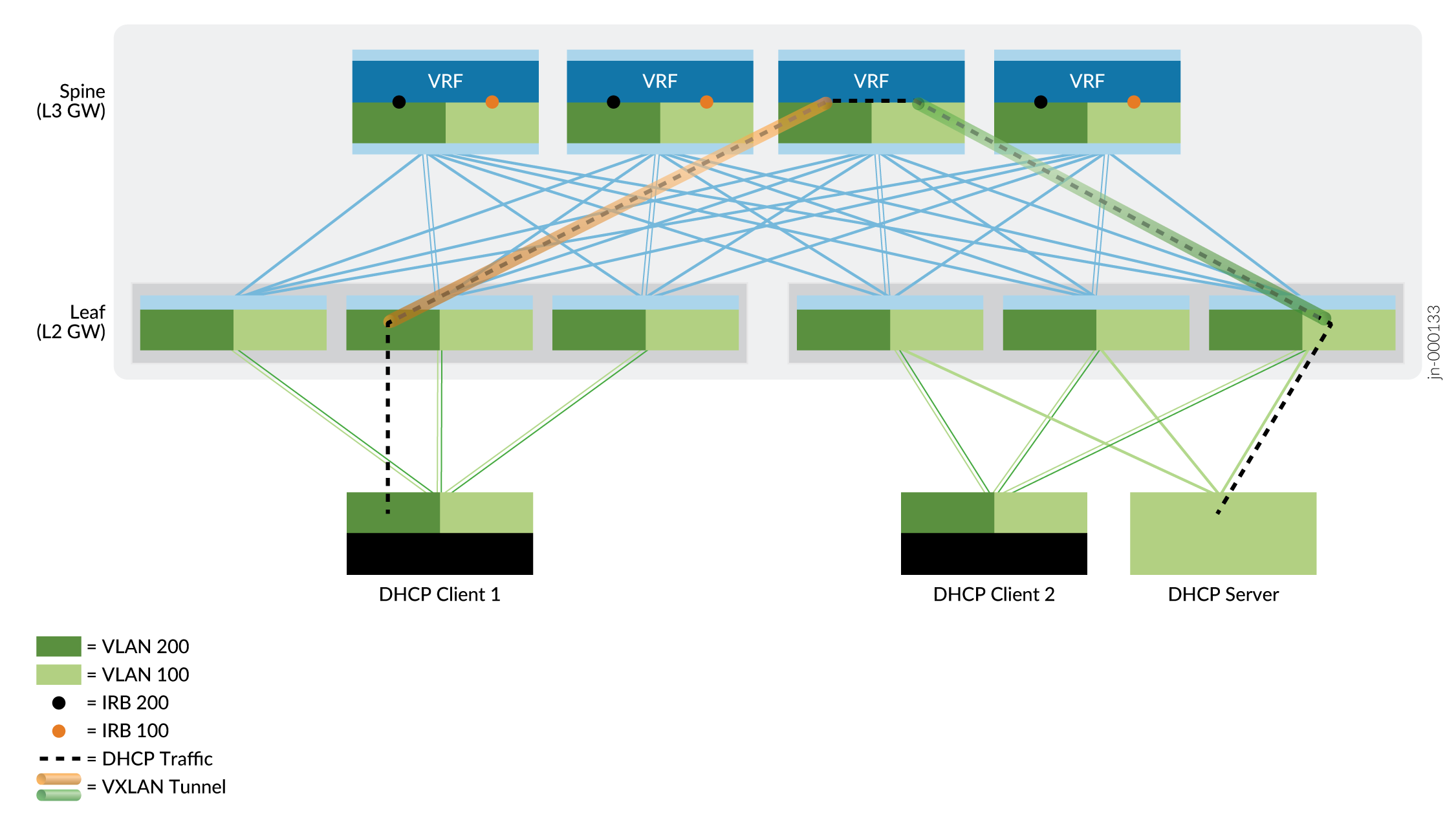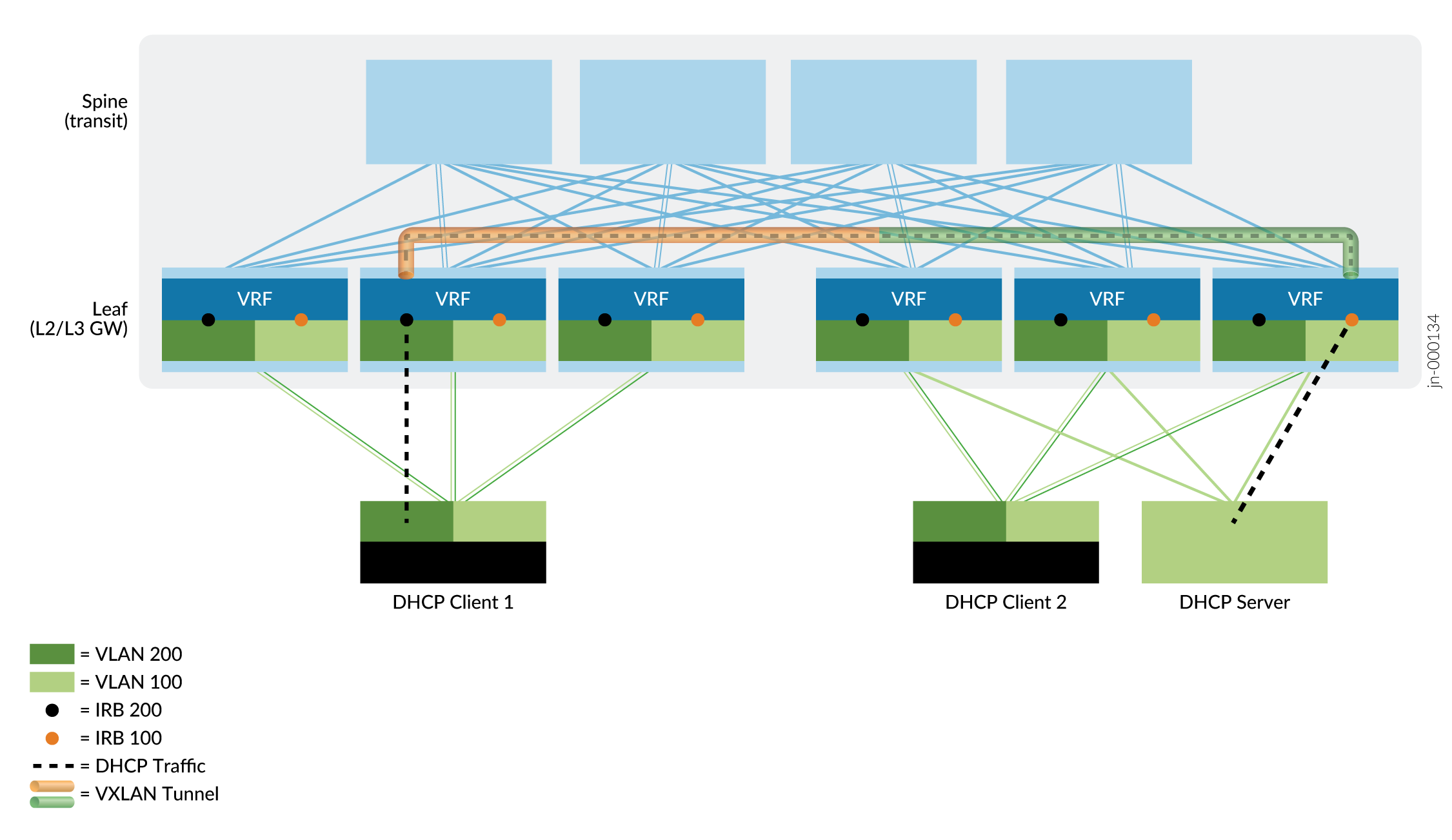DHCP Relay Agent over EVPN-VXLAN
Dynamic Host Configuration Protocol (DHCP) is a protocol that enables a DHCP server to dynamically allocate IP addresses to DHCP clients. This allows you to manage IP addresses and other network configurations easily. The DHCP relay agent forward DHCP messages between DHCP clients and DHCP servers when they are on different networks. Junos supports configuring the DHCP relay agent in an EVPN-VXLAN fabric.
In an EVPN-VXLAN fabric, the DHCP server and the DHCP clients connect into the network using access interfaces on leaf devices. The DHCP server and clients can communicate with each other over the existing network without further configuration when the DHCP client and server are in the same VLAN. When a DHCP client and server are in different VLANs, DHCP traffic between the client and server is forwarded between the VLANs through integrated routing and bridging (IRB) interfaces.
You can configure DHCP relay on a centrally-routed bridging overlay or on an edge-routed bridging overlay in an EVPN-VXLAN fabric. The main difference between the overlay models for DHCP relay configuration is the IRB interfaces. In a centrally-routed bridging overlay, these IRB interfaces are on the spine devices, while in an edge-routed bridging overlay, they are on the leaf devices.
DHCP relay is supported in EVPN-VXLAN fabrics with IPv6 underlay. For information on IPv6 underlay, see EVPN-VXLAN with an IPv6 Underlay.
DHCP Relay on a Centrally-routed Bridging Overlay
In a centrally-routed briding overlay, the spine devices function as Layer 3 gateways that handle traffic between VXLANs while the leaf devices function as Layer 2 gateways that handle traffic within a VXLAN. DHCP clients are connected to pure Layer 2 EVPN leaf devices. DHCP packets are sent over the EVPN core towards spine devices, which function as DHCP relay agents, forwarding the packets to the servers. Configuring DHCP relay on the spine devices of a centrally-routed bridging overlay allows you to simplify and centralize the routing of the DHCP messages.
Figure 1 shows how DHCP traffic is forwarded in a centrally-routed bridging overlay where the DHCP client and server connect to access interfaces on different leaf devices in different VLANs. For information on how to configure DHCP relay in a centrally-routed bridging overlay, see DHCP Relay Design and Implementation.

DHCP Relay on an Edge-routed Bridging Overlay
In an edge-routed bridging overlay, the leaf devices serve as both Layer 2 and Layer 3 gateways. All leaf devices support IRB functionality and function as VTEPs to establish VXLAN tunnels. Spine devices are configured to handle only IP traffic, which removes the need to extend the bridging overlays to the spine devices.
Figure 2 shows how DHCP traffic is forwarded in an edge-routed bridging overlay where the DHCP client and server connect to access interfaces on different leaf devices in different VLANs. For more information on configuring DHCP relay in an edge-routed briding overlay, see Configure a DHCP Relay in EVPN-VXLAN Fabric Architecture.

